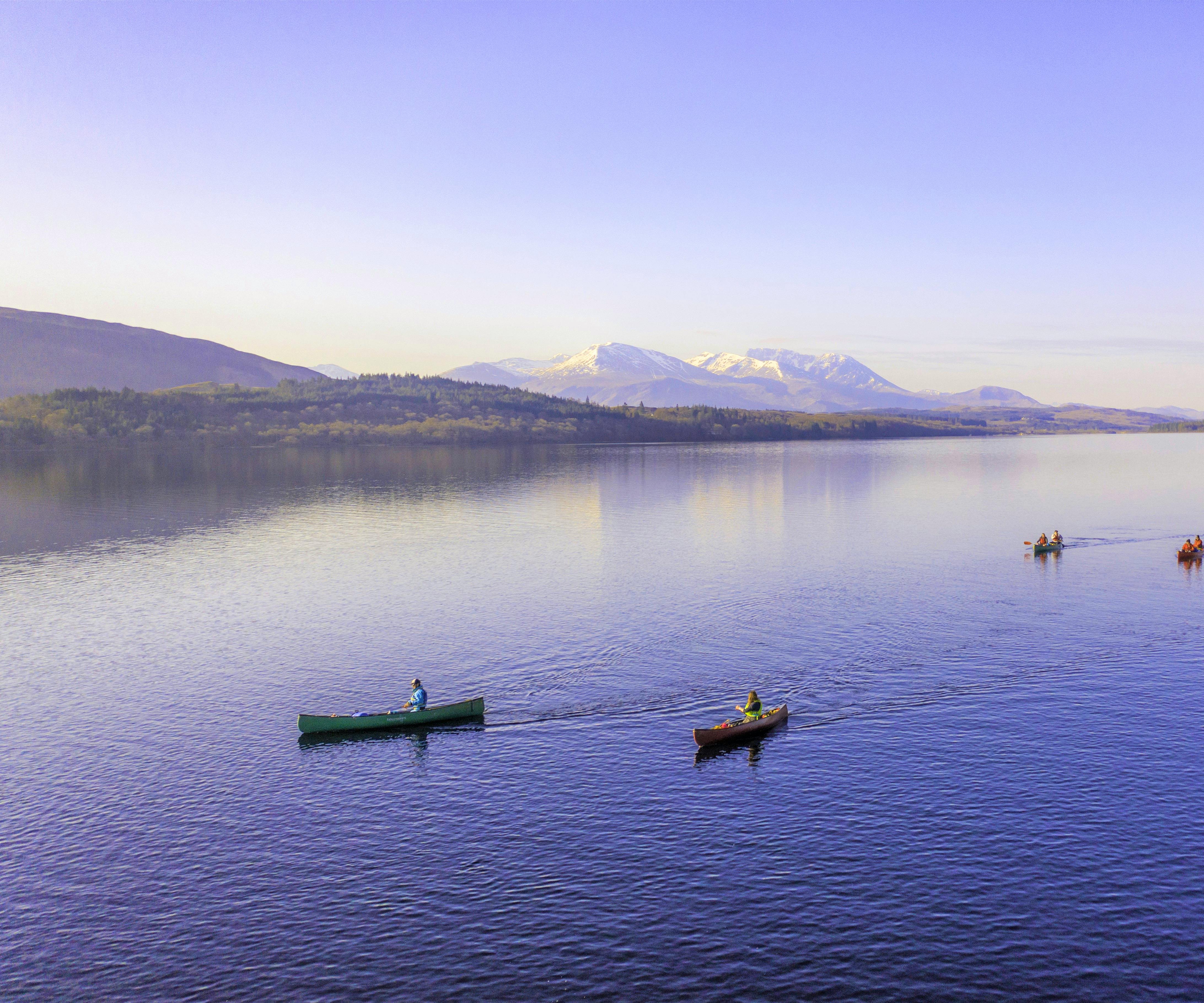Epic Exercises for Kayaking: Try These Today

How to Train for Kayaking: 5 Essential Things to Know
1. Strengthen Your Core

2. Build Arm and Shoulder Endurance
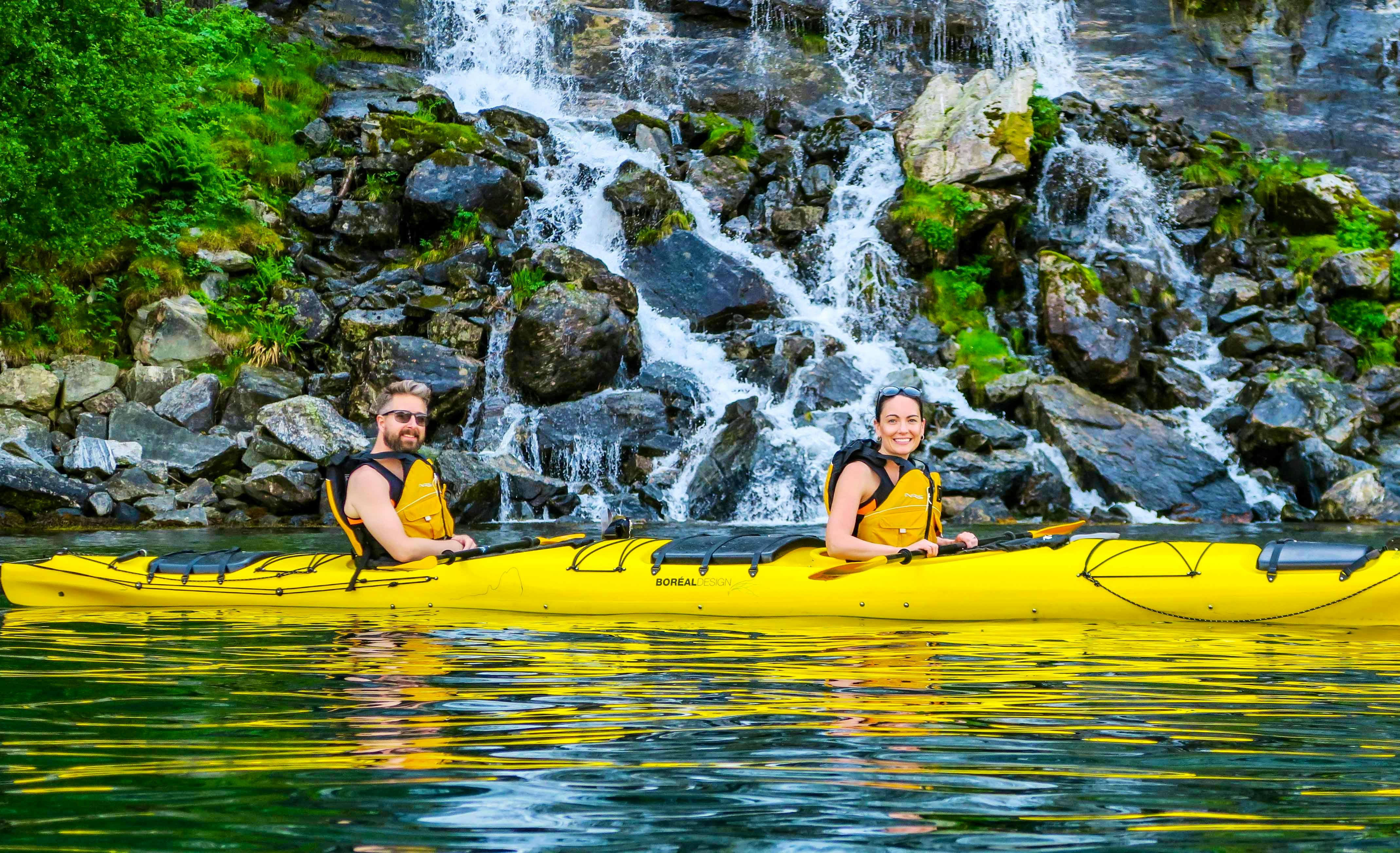
3. Work on Your Balance
Balance on one leg (hold for 30 seconds and switch)
Use a balance board if you have one available. Practice standing on it to mimic the feeling of being in a kayak
Yoga is excellent for improving balance and flexibility
4. Add Cardio to Your Routine

5. Practice Your Paddling Techniques
What Muscles Are Used in Kayaking?
Back muscles: Latissimus dorsi, rhomboids, and trapezius help pull the paddle and maintain good posture.
Shoulders and chest: Deltoids (shoulders) guide the paddle. The Pectoralis major (chest) helps push the paddle forward.
Arms and hands: Biceps pull the paddle, triceps push, and forearms help with grip.
Core: Obliques and erector spinae rotate your body, adding power to each stroke.
Hips and legs: Hip muscles and legs stabilise you in the kayak.

16 Best Exercises for Kayaking
1. Single-Arm Bent Over Row
Stand beside a bench or sturdy surface, holding a dumbbell in one hand
Bend at your hips and knees, keeping your back straight
Place your free hand on the bench for support
Pull the dumbbell towards your body, squeezing your shoulder blade at the top of the movement
Lower the weight back down slowly
Reps: 15 on each arm
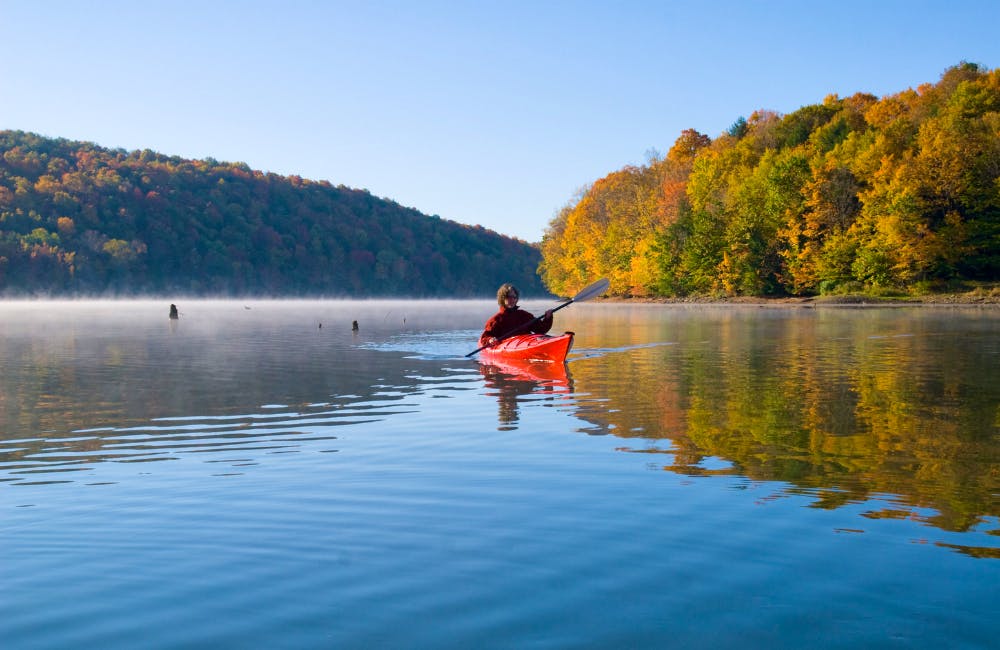
2. Pushups
Start in a plank position with your hands slightly wider than shoulder-width apart
Lower your body until your chest nearly touches the ground
Push back up to the starting position, keeping your core engaged
Reps: 10 to 15
3. Lat Pulldowns
Use a resistance band or cable machine. If using a band, anchor it securely overhead
Sit or kneel, gripping the band or handle with both hands
Pull it down towards your chest, keeping your elbows close to your sides
Slowly return to the starting position
Reps: 15 to 20
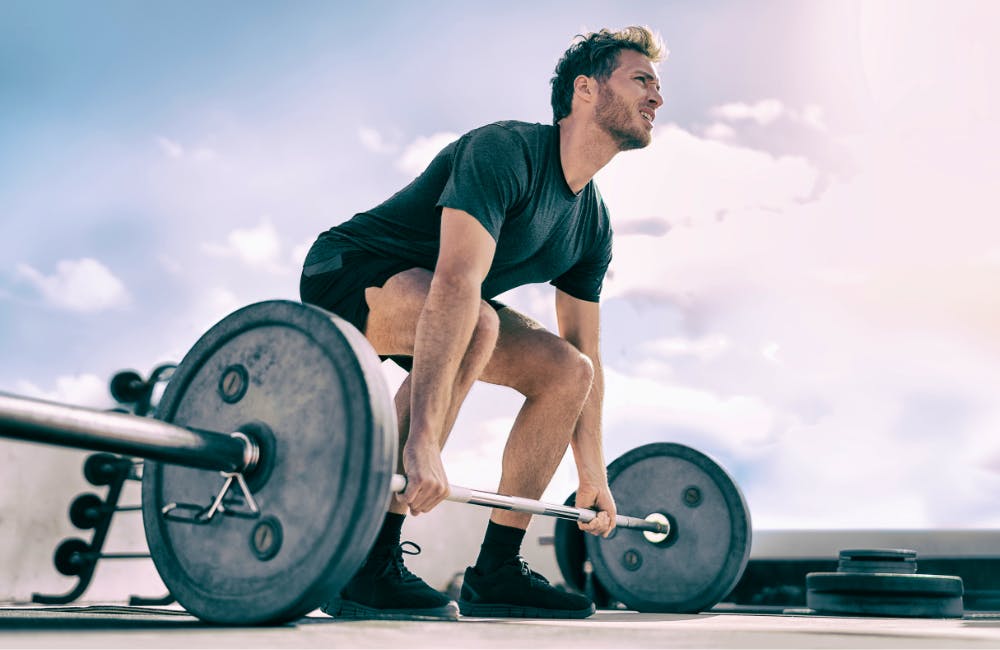
4. Deadlifts
Stand with your feet shoulder-width apart, holding a barbell or dumbbell in front of you
Bend at your hips and knees, lowering the weights while keeping your back straight
Push through your heels to lift the weights back up, fully extending your hips
Reps: 10 to 12

5. Core Rotations
Attach a resistance band to a sturdy point at waist height
Stand sideways to the anchor point and hold the band with both hands
Rotate your torso away from the anchor, pulling the band across your body
Return to the starting position in a controlled manner
Reps: 15 on each side
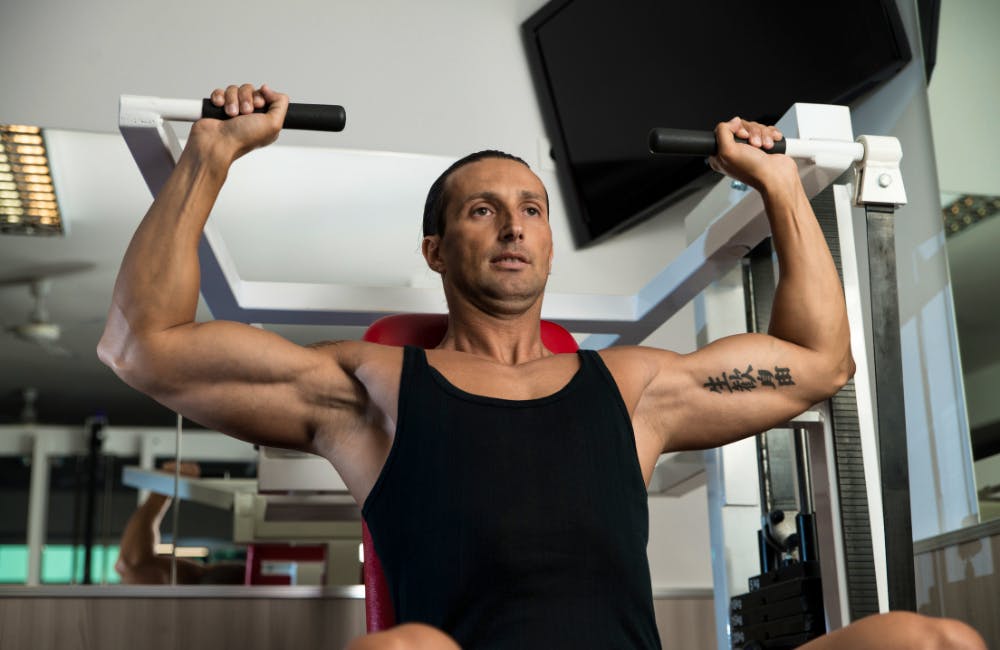
6. Shoulder Press
Stand or sit with dumbbells at shoulder height
Press the weights overhead until your arms are fully extended
Lower the weights back to shoulder height
Reps: 10 to 15
7. Leg Raises
Lie flat on your back with your legs extended
Keeping your legs straight, slowly raise them toward the ceiling
Lower them back down without touching the ground
Reps: 10 to 15

8. Forearm Grip Exercises
Use a hand gripper or a stress ball
Squeeze the gripper or ball tightly, holding for a few seconds
Release and repeat
Reps: 15 to 20 for each hand
9. Open Book Exercise
Lie on your side with knees bent at 90 degrees
Extend both arms in front of you at shoulder height, resting your hands on top of each other
Slowly lift your top arm, rotating your torso to look behind you
Rotate back to the starting position
Reps: 15 on each side
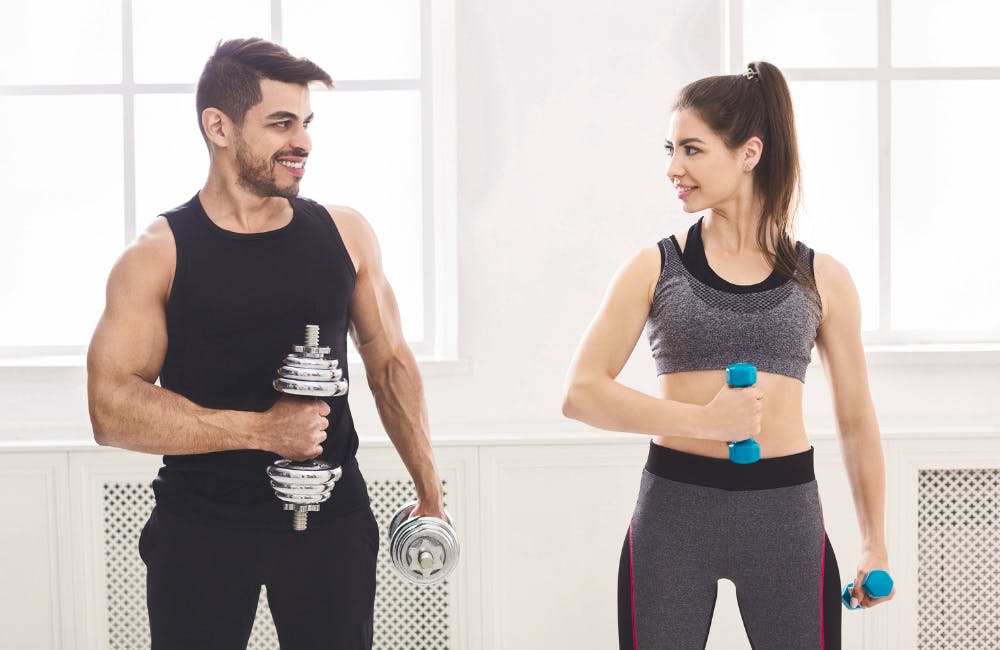
10. Skater with Uppercut
Stand with a dumbbell in each hand
Hop laterally to your right, bringing your left arm up like an uppercut
Switch sides, hopping to the left with your right arm
Reps: 15 on each side
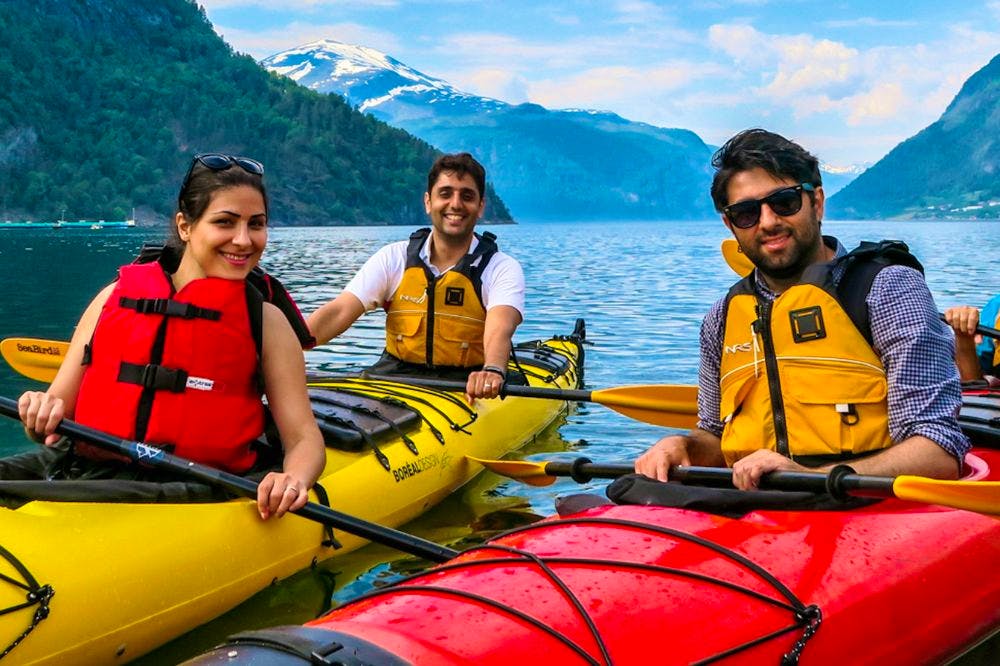
11. Kneeling Chop Exercise
Secure a resistance band at shoulder height
Stand sideways to the anchor, grabbing the band with both hands
Kneel with one knee down and the opposite foot forward
Pull the band down across your body while rotating your trunk
Reps: 20 on each side
12. Kneeling Lift Exercise
Secure a resistance band at ankle height
Kneel with one knee down and the opposite foot forward, grabbing the band
Rotate your torso upward while pulling the band across your body
Reps: 20 on each side

13. Single-Leg Squat and Row Exercise
Secure a resistance band above shoulder height
Hold the band in one hand and balance on one leg
Perform a single-leg squat while simultaneously rowing with the opposite arm
Reps: 15 on each side
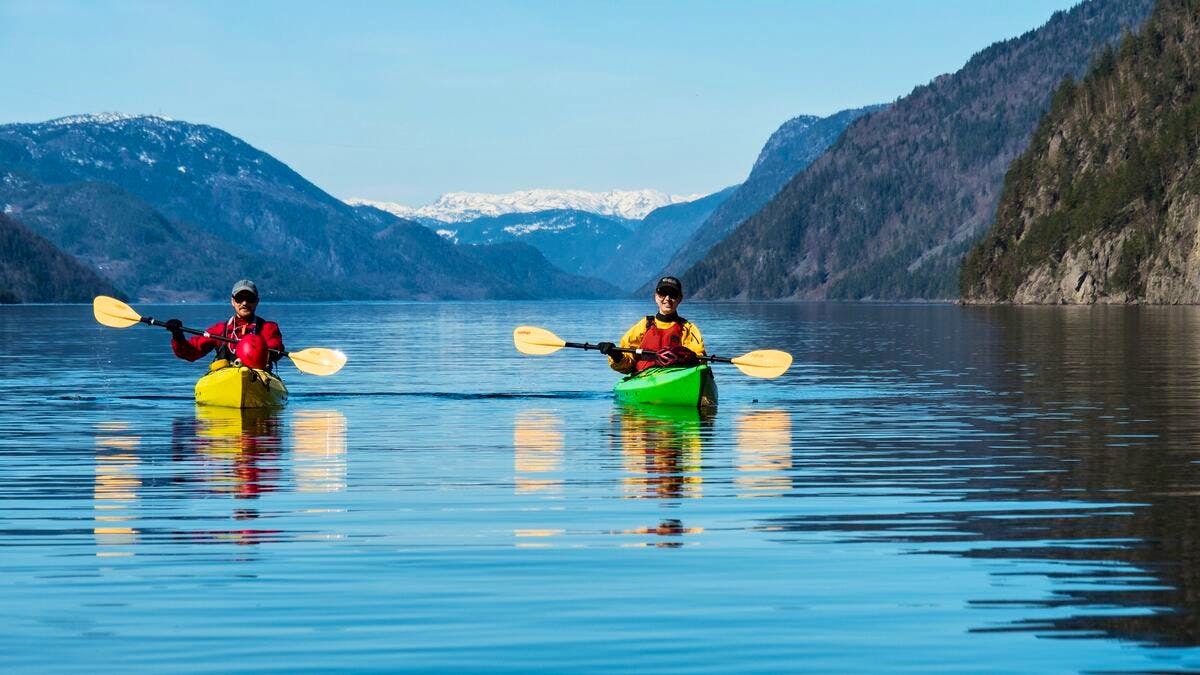
14. Pull-Down Exercise
Secure a resistance band at shoulder height
Stand with your feet slightly apart, gripping the band with one hand
Pull the band down to your side while keeping your core tight
Reps: 20 on each side

15. Crunch and Twist
Lie on your back with knees bent
Perform a crunch, rotating toward one knee as you lift
Alternate sides
Reps: 30 total (15 per side)
16. Book Grab Exercise
Stand upright, holding a hardback book by its spine
Hold the book at your side for 10 seconds
Switch sides
Reps: 15 on each side

Pro Tips for Doing These Exercises for Kayaking
Warm-up: Always start with a 5 to 10-minute warm-up to increase your heart rate. You can use cardio equipment or take a brisk walk.
Rest: Take 30 to 45 seconds of rest after each exercise. After completing one round of all exercises, rest for 2 minutes before repeating.
Pacing: Make sure that you move at your own pace. It’s crucial to listen to your body. If an exercise feels painful, modify it or skip it.
Progression: Gradually increase your repetitions or resistance as your strength improves.
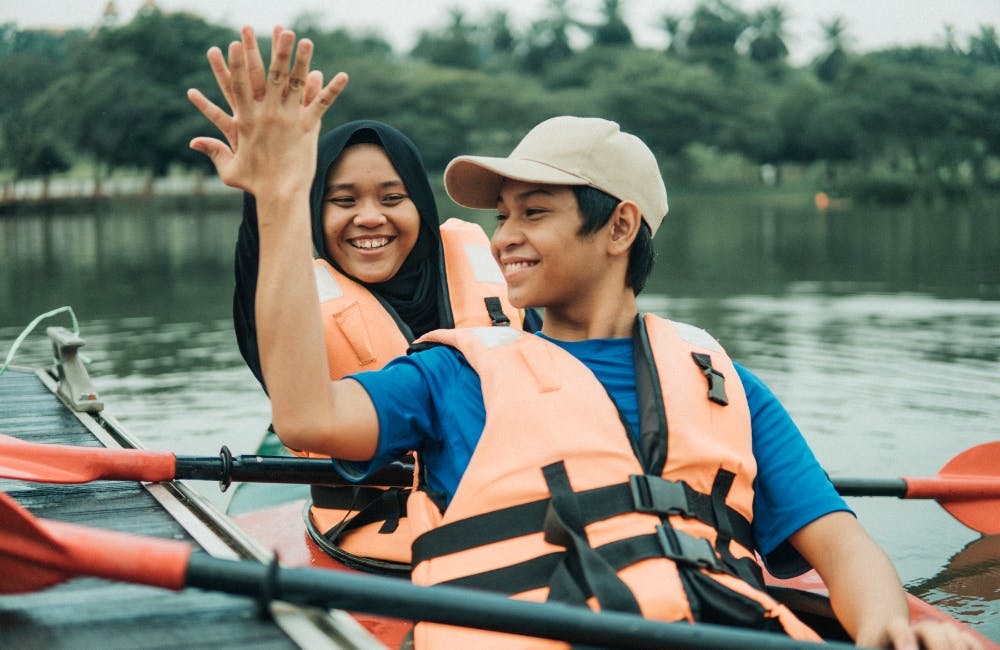
Summary
Find your next adventure
Why Skyhook?
Join over 27,000 Skyhook adventurers who've used our platform to book directly with our vetted local guides, at local prices (we never markup).
Expert Local Guides
Experienced local guides, handpicked by us.
Best Prices
Never pay a markup on the local guide's price.
Exclusive Club
Earn loyalty rewards every time you travel.
Great Social Vibes
Small group tours provide a richer experience.
Stellar Feedback
Over 2,800 reviews, average of 4.9/5 stars.







